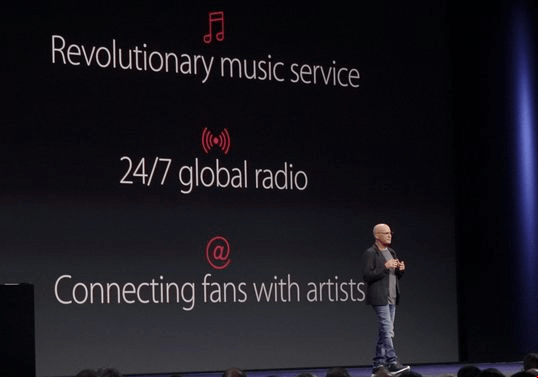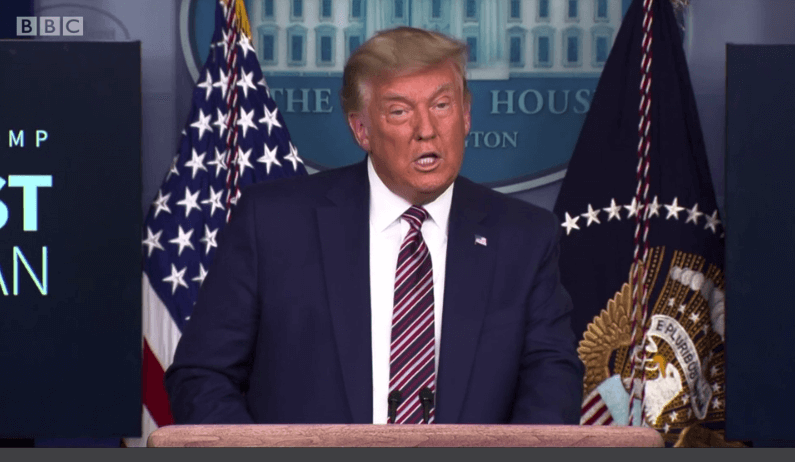What exactly is Apple Music, anyway?
A lot of people left the Apple WWDC developers’ conference wondering just that after Apple previewed its new music subscription and radio service Monday.
Is Apple Music, set to debut June 30, Apple’s answer to Spotify? Or Pandora? Is iTunes Radio, the new service Apple launched in 2013 at the same conference, now dead?
After Apple made its case to the crowd at WWDC, several reviews were not kind:
— “One of the sloppiest debuts for any new product or service from the company,” said Business Insider.
— “Apple Music is a major mess,” said Mashable.
— Engadget said it “feels like a mish-mosh of disparate elements the company thinks we might want.”
OK, so what is Apple Music?
To answer these questions, Apple invited select journalists for private one-on-one time with the reconstituted app Monday. Under the usual Apple rules, photos, video, quotes and note taking were prohibited.
So here’s what I can tell you:
— On June 30, a new iOS software update will be available. Download it, and the new Apple Music tab will appear on the front screen of your iPhone.
— The Red music tab on the front page of the iPhone will turn white.
Open the music tab now and you’ll see your downloads, categorized by albums and songs, along with tabs for other features like iTunes Radio.
When the new Apple Music kicks in, the computer-generated iTunes Radio is gone, replaced by the human programmed Beats One Radio, a 24/7 free, curated, live radio station with celebrity DJs such as Zane Lowe, who will broadcast from London, New York and Los Angeles.
Like iTunes Radio, this service is free.
Jimmy Iovine at WWDC Apple conference.
Jimmy Iovine at WWDC Apple conference. (Photo: Chris Wiggins)
The iTunes library will be pushed into the background. Instead, you’ll see photos for albums you could be listening to as part of the $9.99 monthly Apple Music subscription service — something similar to the Beats Music service that launched in 2013 as a monthly offering with curated content. Nothing’s changed there.
(The iTunes Store tab still resides on the front page, as a separate app.)
Like Rdio, Spotify, iTunes Radio, Beats Music and so many other similar services, Apple Music starts off by getting to know you.
From a list of musical genres you tell Apple what you like. Choices for this demo included Alternative, Indie, Rock, Jazz, Pop, Hits. I chose Jazz and Rock, though I was surprised there weren’t sub-categories, as I’ve seen elsewhere, such as classic rock, metal and folk rock.
Next, I was asked to confirm some of the artists Apple decided I liked. From the list, I selected Bruce Springsteen and jazz masters Thelonious Monk and Fats Waller.
Jazz is a rich musical idiom that spans many decades — Monk’s best work was in the 1950s and ’60s. I didn’t see any more current choices, such as Pat Metheny or Jon Batiste. The artist choices seemed minimal. Perhaps it was because of the demo.
Once Apple Music gets to know you, it can suggest albums for you to listen to via the streaming service, curated radio stations based on your tastes or artists to follow via it’s Connect social network. This is similar to the Ping service Apple introduced a few years back for iTunes.
Because this was not a working model, we couldn’t go to the next step and see what kind of choices Apple came up with.
The app looked fine, but even after my demo time was up, I still wasn’t sure what they were selling me. Perhaps Apple will fine-tune its marketing by June 30.
Despite the brickbats Monday, Apple could turn Apple Music into the world’s most popular music service. The market is there: There are about 70 million monthly listeners on Pandora Radio, while 15 million pay for Spotify.
Apple has a waiting audience of more than 700 million iPhone owners, digital real estate it can devote to its own app, as well as all those folks who walk into Apple Stores each day. And no one does a better job at TV advertising and billboards.
But from what we saw Monday, even after the demo, this is clear: Apple has its work cut out.
What exactly is Apple Music, again?
Culled from: USA Today










